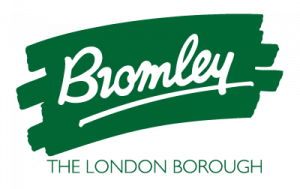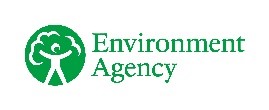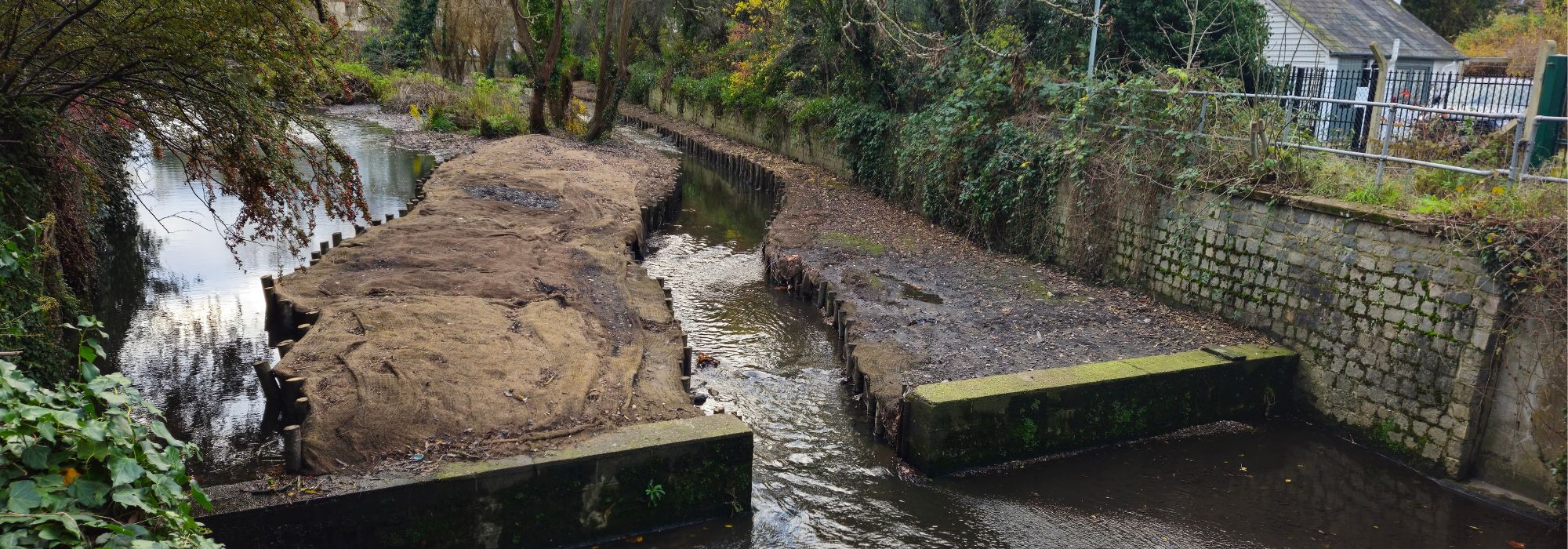The River Ravensbourne and Glassmill Pond
The River Ravensbourne is a tributary of the River Thames, flowing for 17km from its spring in Keston, London Borough of Bromley, to its confluence with the Thames at Deptford. The area around the Ravensbourne is mainly urban and residential. However, it does flow through some greenspaces, including Church House Gardens in Bromley where Glassmill Pond is located. This historic millpond is one of the oldest features in Bromley, associated with one of 11 mills on the Ravensbourne mentioned in the Doomsday Book. Therefore, it holds great heritage value within the area.
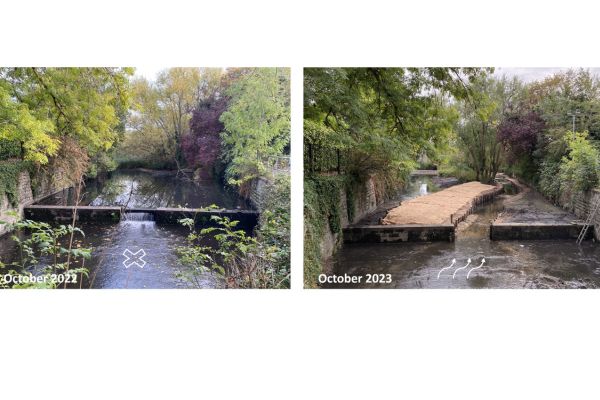 Originally, Glassmill Pond and the River Ravensbourne were separate waterbodies. However, in 1955 the river was diverted to flow through Glassmill Pond with the aid of two weirs at the inflow and outflow points. While this offered good news at the time, the connection initiative between Glassmill Pond and the River Ravensbourne has also brought some challenges such as flood risk and barriers for wildlife to thrive.
Originally, Glassmill Pond and the River Ravensbourne were separate waterbodies. However, in 1955 the river was diverted to flow through Glassmill Pond with the aid of two weirs at the inflow and outflow points. While this offered good news at the time, the connection initiative between Glassmill Pond and the River Ravensbourne has also brought some challenges such as flood risk and barriers for wildlife to thrive.
Working together to make improvements
Fast forward to today, Thames21 and its partners have been able to separate the water bodies again. The project involved the separation of the mill pond from the main channel with a bund (a barrier). The mill pond has now been desilted, and the newly independent river channel will now carry sediment down the river, helping to slow down the rate of siltation on the pond and maintaining its depth for longer.
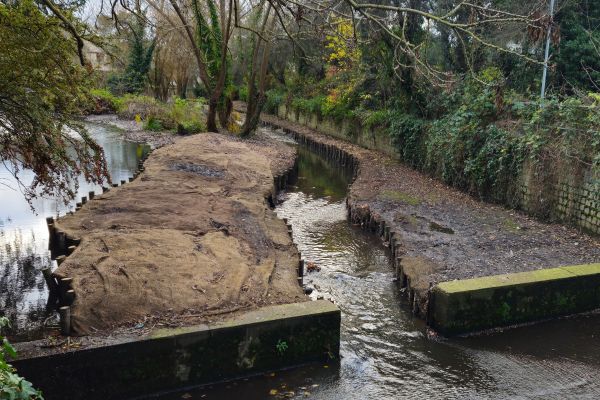
Cobbles and gravel were also installed on the riverbed to enhance fish passage within the site. This creates a pool-riffle sequence, acting as baffles that facilitate fish movement and resting between areas, all the way up to the culvert upstream. The project team also raised the water level in the area surrounding the culvert, reducing the height fish must overcome when swimming upstream.
Setting the river free
Miguel Sanabria, River Restoration Officer at Thames21, said: “We are super proud to have worked with our partners to complete this amazing river restoration project. The River Ravensbourne has now been allowed to flow freely. The more natural shape and size of the river channel should also kick-start natural river processes such as sedimentation in the margins and faster flows in the main channel which would help to create clean, spawning gravels.”
Councillor Will Rowlands, Executive Councillor for Environment, said: “The completion of the desilting and improvement work at Glassmill Pond is another great milestone to enhance this green space, reducing flood risk and encouraging nature and biodiversity in the borough. A big thank you to Thames21 for their work, and thank you too to the Friends of Bromley Town Parks and Gardens, the Environment Agency and idverde for their support. The River Ravensbourne and Glassmill Pond is an interesting place for people to observe wildlife as they pass by and it will be interesting to see how this develops as water quality also improves.”
Jeff Royce, Chair of the Friends of Bromley Town Parks and Gardens, added: “We are delighted to have this desilting completed for our beautiful pond. Working with Thames21, Bromley Council, the Environment Agency and idverde on this project has been the fruition of several years of hard work and we are grateful for their perseverance and contributions to this work.”
Amanda Latter, Ravensbourne Catchment Co-ordinator at the Environment Agency, said: “We are very pleased to have been able to support the restoration of Glassmill Pond. As well as the improved fish passage and the natural functioning of the river, it will also benefit biodiversity and water quality. It’s a wonderful place with heritage value for the local community to enjoy and cherish for years to come. We look forward to continuing to work with our partners to help restore as much of the River Ravensbourne as we can to its natural beauty for the benefit of the local people and wildlife.”
Charlotte Harrington, Co-CEO for Belu, added: “We’re delighted to have invested in this project in partnership with Thames21. What a fantastic achievement. A great area for the local community to enjoy, as well as a safe home for wildlife. Belu’s purpose is to change the way the world sees water and this transformation of the River Ravensbourne and Glassmill Pond aligns perfectly. We’re excited to have helped make this project a reality.”
The ‘icing-on-the-cake’ final phase of the project, which is now in the planning stage, will include planting, adding diversity to the river features, managing vegetation, and seeding gravel.
Upcoming activities
Tree works and vegetation management activities will take place in the spring of 2024 to prepare the site for the upcoming restoration works. This will allow more sunlight into the new channel and thus the establishment of bankside and in-channel vegetation that will support a wider diversity of species. In addition, the obtained material will be utilized in the construction works and in creating structures in the new river to increase habitat diversity for aquatic species.
For more information please contact:
River Restoration Officer Miguel Sanabria – miguel.sanabria@thames21.org.uk
or
River Restoration Manager Carolina Pinto- carolina.pinto@thames21.org.uk
We would like to thank all of our partners for all their support.
